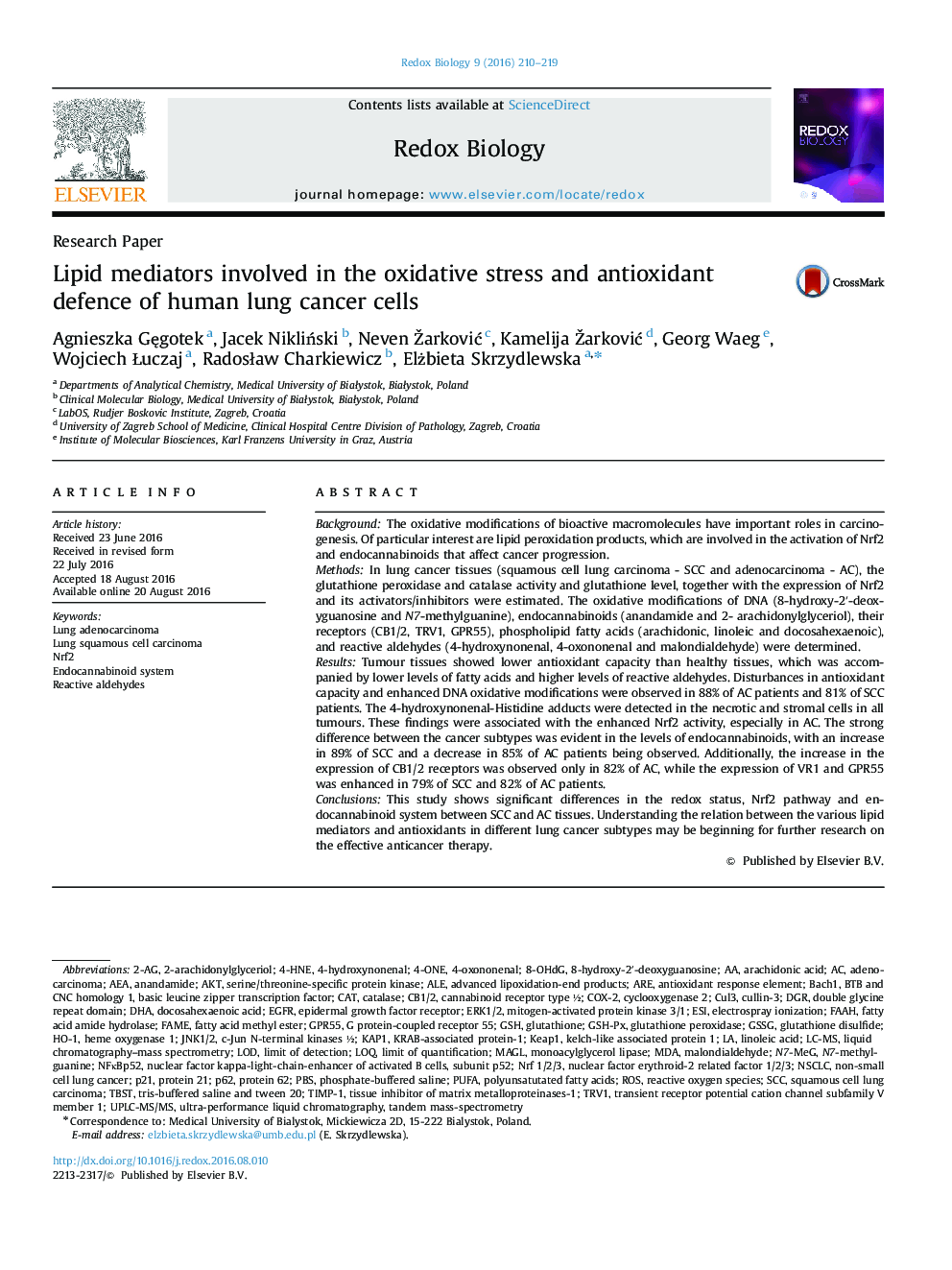| کد مقاله | کد نشریه | سال انتشار | مقاله انگلیسی | نسخه تمام متن |
|---|---|---|---|---|
| 1922821 | 1535841 | 2016 | 10 صفحه PDF | دانلود رایگان |
• AC tissues show lower antioxidant capacity than SCC.
• Nrf2/ARE pathway is activated stronger in AC than in SCC.
• AC exhibits more lipid oxidative modifications than SCC.
• HNE-protein adducts are detected in the necrotic and stromal cells in SCC and AC.
• SCC exhibits increase in endocannabinoids level while in AC reverse effect is observed.
BackgroundThe oxidative modifications of bioactive macromolecules have important roles in carcinogenesis. Of particular interest are lipid peroxidation products, which are involved in the activation of Nrf2 and endocannabinoids that affect cancer progression.MethodsIn lung cancer tissues (squamous cell lung carcinoma - SCC and adenocarcinoma - AC), the glutathione peroxidase and catalase activity and glutathione level, together with the expression of Nrf2 and its activators/inhibitors were estimated. The oxidative modifications of DNA (8-hydroxy-2′-deoxyguanosine and N7-methylguanine), endocannabinoids (anandamide and 2- arachidonylglyceriol), their receptors (CB1/2, TRV1, GPR55), phospholipid fatty acids (arachidonic, linoleic and docosahexaenoic), and reactive aldehydes (4-hydroxynonenal, 4-oxononenal and malondialdehyde) were determined.ResultsTumour tissues showed lower antioxidant capacity than healthy tissues, which was accompanied by lower levels of fatty acids and higher levels of reactive aldehydes. Disturbances in antioxidant capacity and enhanced DNA oxidative modifications were observed in 88% of AC patients and 81% of SCC patients. The 4-hydroxynonenal-Histidine adducts were detected in the necrotic and stromal cells in all tumours. These findings were associated with the enhanced Nrf2 activity, especially in AC. The strong difference between the cancer subtypes was evident in the levels of endocannabinoids, with an increase in 89% of SCC and a decrease in 85% of AC patients being observed. Additionally, the increase in the expression of CB1/2 receptors was observed only in 82% of AC, while the expression of VR1 and GPR55 was enhanced in 79% of SCC and 82% of AC patients.ConclusionsThis study shows significant differences in the redox status, Nrf2 pathway and endocannabinoid system between SCC and AC tissues. Understanding the relation between the various lipid mediators and antioxidants in different lung cancer subtypes may be beginning for further research on the effective anticancer therapy.
Figure optionsDownload as PowerPoint slide
Journal: Redox Biology - Volume 9, October 2016, Pages 210–219
